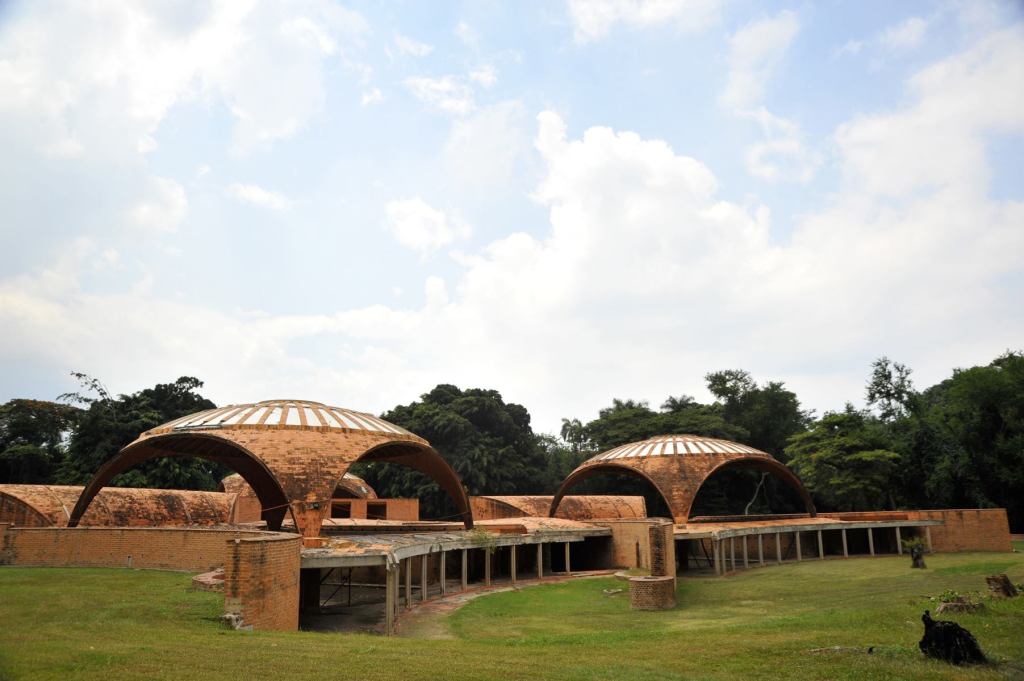Three main players are involved with a controversy brewing over Cuba’s Schools of Art. Or rather, the controversy is that one of the main players isn’t involved at all.
In June, Cuban ballet star Carlos Acosta approached British architect Norman Foster, Hon. FAIA, to finish the School of Ballet at the Schools of Art, outside of Havana. Acosta lives in England, where he has been with the Royal Ballet since 1998, and now he wants to start a private ballet school in his home country. The problem is that the original architect, Vittorio Garatti, is still alive. So some are asking: Why is a British architect finishing a Cuban project for a Cuban artist, when the original architect, who lived in Cuba for a time, is still alive?
Garatti designed the school in 1961 at the behest of Fidel Castro, who, after a round of play, decided to convert a golf course into a national place of study for the arts. Castro hired three architects—Richard Porro, from Cuba, and Garatti and Roberto Gottardi, from Italy,—to design schools for arts such as dance, theater, ballet, and music. But Castro soon became influenced by the Soviet Union and its harsh, prefabricated, concrete architecture and stopped the project with only two of five schools complete.
In the early 2000s, with Castro’s support, the project was briefly restarted after the buildings became some of the first modern examples to make the World Monuments Fund’s watch list in 2000 and 2002—and some of the first to be nominated while the architects were still alive—but then it was abandoned again. The buildings are an example of a rare form of Modernism, and they also revived the Catalonian vault. They are almost contemporary in their priority on the local materials brick and terra-cotta, and their adherence to climate-specific design. Since 1961, the buildings have functioned as schools, despite their decay, turning out almost every post-’60s Cuban artist, architect, dancer, and musician.
The story of the buildings’ starts and stops is documented in the 2011 film Unfinished Spaces by directors Alysa Nahmias and Benjamin Murray, who articulate the schools as an apt metaphor for the different phases of the Cuban Revolution, a metaphor that continues to play out today. “If the buildings are changing now, then are they going to be public or private?” Nahmias asks. “Will they be susceptible to international influences? The island itself is facing these tough decisions about the future.”
Granted, a client isn’t required to hire the original architect when doing renovations or reconstructions of a project, Nahmias says. But “when an original architect is alive, how do you deal with that? When something is declared a national patrimony and the architect is alive?” she asks. “A lot of investors are looking at Cuba and wanting to make of it what they like, and the Cuban officials and the Cuban people are at a crossroads.”
Nahmias says that Garatti has been working with Cuban officials for the past 10 years, flying back and forth between Cuba and Italy, to get the restoration and completion ready for when more funding arrived.
Foster’s office has not immediately responded to a request for comment, but when Building Design broke the story in June that Foster + Partners would redevelop the original building into the new arts complex, Foster said, “Carlos is a great dancer who is inspiring the regeneration of an iconic ruin of early modernism outside Havana.”
Garatti sent a letter from his home in Milan to Fidel and Raul Castro, NPR reported, saying that he was concerned that Acosta’s plan could lead toward privatization of the school. Other architects have come to Garatti’s defense, but Acosta has said that he can take his plans for a ballet school to another country, if necessary.
